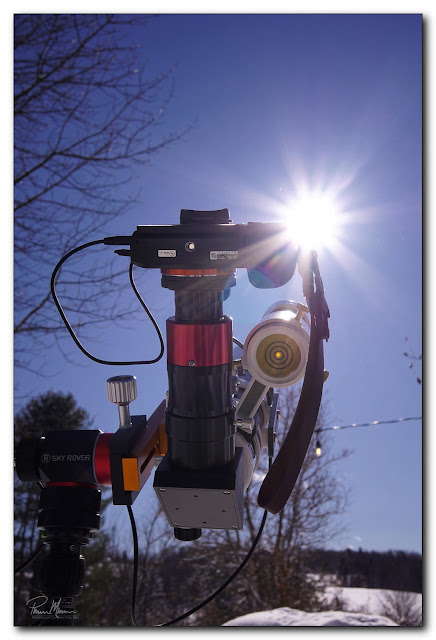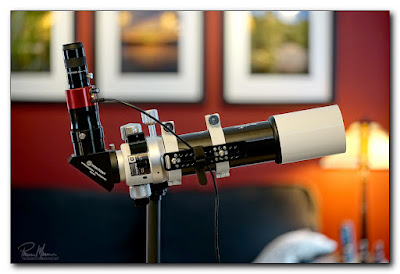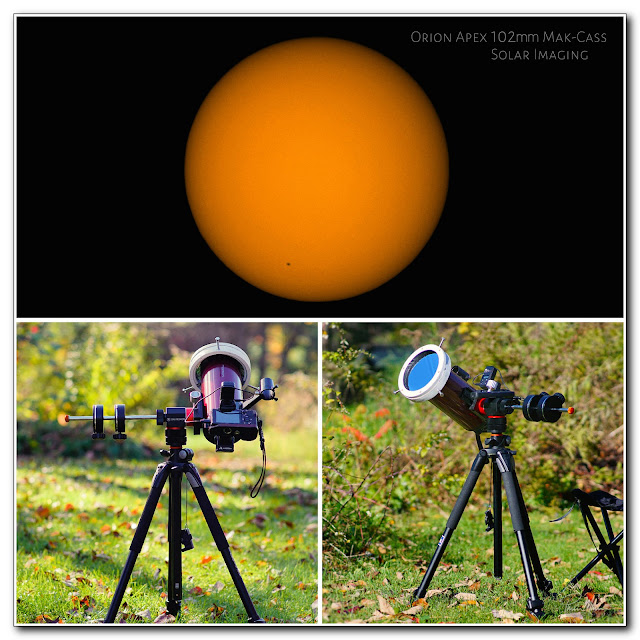Sol Searcher

I had previously written about having problems finding the sun with my telescope while using a finder scope called the Sol Searcher. I resorted to removing the Sol Searcher and going back to using my homemade solar finder scope instead. My homemade solar finder scope works very well (pictured at right with the bullseye on the back end of it) but, when I'm using more than one telescope for solar astronomy, it is best to have a finder scope for each telescope. I was hoping this little, lightweight Sol Searcher finder scope would be the ideal solution but I was quite disappointed until the other day. When viewing the sun, your body is situated at the rear end of the telescope where the eyepiece is located. You would naturally want to also view the solar finder scope from this position as well and that is what I was doing. The problem is that when you are back behind the Sol Searcher finder scope, you cannot see where the sun is on the Sol Searcher until you are dead center pos








